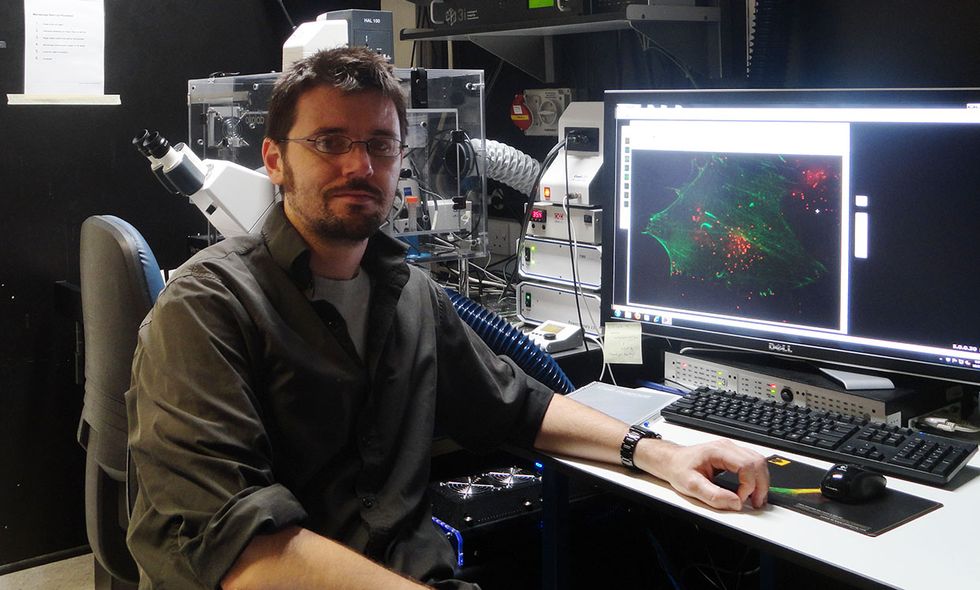Biomedical engineering is expected to be the fastest-growing job market in the United States during the next seven years, according to the U.S. Bureau of Labor Statistics (BLS). Between 2010 and 2020, the number of biomedical engineers is projected to rise by about 62 percent.
The popularity of biomedical engineering—an area of life sciences that combines engineering techniques with biology to develop medical devices—can be seen around the world. Australia, for example, has become home to a thriving biomedical industry, with companies such as Cochlear (developer of the cochlear implant), Resmed (which makes devices to treat sleep apnea), and Ventracor (developer of artificial hearts), all in Sydney. In England, several state-of-the-art research facilities have started up, including institutes of biomedical engineering at both Imperial College London and the University of Oxford.
Despite the projections, biomedical engineering—often called bioengineering—is a very competitive field. “The total field of biomedical engineering is small, representing 2 to 3 percent of the total engineering job market, and a large percentage growth does not necessarily translate to large numbers of new job opportunities,” says Life Fellow Kenneth Foster, a professor of bioengineering at the University of Pennsylvania School of Engineering and Applied Science, in Philadelphia.
In fact, with a little under 16 000 biomedical engineering jobs in the United States in 2010, that 62 percent growth equates to just about 10 000 jobs being added through 2020, as projected by the BLS. So what can an engineer do to stand out and snag a bioengineering or other life sciences job?
To help answer that question, The Institute spoke with Foster and IEEE Member David Barry, who is working in another life sciences area—biology research. Foster, a member of the IEEE-USA Medical Technology Policy Committee, researches biomedical applications of nonionizing radiation from audio through microwave frequency ranges and health and safety aspects of electromagnetic fields as they interact with the body.
Barry is a postdoctoral fellow at the Cancer Research UK London Research Institute, where his work focuses on developing image analysis algorithms to automatically quantify cellular and subcellular processes. He is based at the Cell Motility Lab, where researchers are trying to understand the molecular basis for cell migration.

early exposure
Is biomedical engineering the right career for you? “It’s a great choice for a particular kind of student,” Foster says. “Biomedical engineering students at Penn tend to be more research-oriented, compared with other engineering majors.” It’s important to get the right educational foundation, he says.
“Students should go to a stellar university with an engineering and medical school and get involved early in research,” Foster says. “And if you intend to work in industry you should pick up traditional engineering skills such as signal and image processing and software design so you can compete for entry-level design jobs.”
But a biomedical engineering degree is not always necessary, he points out: “Majoring in electrical engineering does not foreclose job opportunities in biomedical engineering. Many medical imaging companies hire EEs for image- and signal-processing projects, and most medical device companies hire EEs and mechanical engineers for instrumentation design.”
Neither Barry nor Foster were bioengineering majors. “When I got started, there were few biomedical engineering programs,” Foster explains. And Barry says, “My first exposure to anything life sciences–related was a biomedical engineering class I took in the final year of my electronic engineering bachelor’s degree program at University College Dublin in 2004. I came up against a pretty steep learning curve when I started my Ph.D. program in 2005 in biotechnology.”
His Ph.D. research involved the development of image analysis methods to quantify the form and structure of filamentous microbes, organisms used to produce a variety of substances in the biotech industry. That experience led Cancer Research UK to hire him in 2010.
Foster earned a Ph.D. in physics in 1971 from Indiana University, in Bloomington. He next joined the U.S. Navy, where he studied the biological effects of radio-frequency radiation. “There was controversy at the time about the safety of emissions from military radar sets,” he says. The work was so interesting that he decided not only to stay in the field but also to teach bioengineering at Penn. “One of the best-known experts in the field at the time was Herman Schwan at Penn in the newly formed department of bioengineering,” Foster says. “I went there in 1977 and stayed.”
Foster decided to teach, but career paths in the field can be diverse, he says. Each year, about half the students at his university graduating with a bioengineering degree go on to medical or graduate school, eventually becoming doctors or biomedical researchers. The other half join medical device companies, become consultants, or do a dual-degree program with management to land leadership jobs in the field.

THE RIGHT SKILLS
The right education is not all an aspiring bioengineer needs. Soft skills are particularly important in the life sciences, because cooperation is so critical, according to Barry. “It’s a bit of a cliché, but you have to be comfortable working as part of a team,” he says. “Biology is a highly collaborative field. You tend to see a lot more authors listed on a paper about biological research than you would on a typical IEEE technical paper.”
And when you’re part of a diverse team, communicating well is essential. “The term ‘good communication skills’ gets abused quite a bit,” he says. “It’s almost a standard filler on most curricula vitae. But engineers and biologists do speak different languages. Biologists don’t speak math. Engineers have to communicate complex concepts succinctly if they’re going to get their colleagues on board with what they’re trying to do.”
COMPETITION
Looking past the job forecasts and statistics, what does the actual job situation look like for those in the field?
“Research jobs are very competitive and will probably become more so in the future,” Foster says. And as with so many areas, Barry adds that the struggling economy is a challenge. “Job prospects for anyone in research are not great right now, due to the economic climate,” he says. “Funding everywhere is tight.”
But both Foster and Barry see a reason for optimism.
“Generally speaking, there is a demand for engineers in biological research,” Barry says. And the competitive nature of the field can translate to a growth in innovation, and with it, an increase in opportunity.
“The biomedical device industry consists of thousands of companies, most of them small, with specialized products competing for niche markets, and many start-up companies trying to get innovative new products onto the market,” Foster says. “That translates to a large but scattered job market for engineers of all kinds, with plenty of opportunity for entrepreneurship.”
Another reason for hope is the constantly shifting nature of the life sciences. “Our fundamental understanding of biology is changing, seemingly on a daily basis,” Barry says. “It’s comparable to what happened in the world of physics at the beginning of the last century, and it’s very exciting to be involved in such a rapidly evolving field.”
For Foster, the excitement of a job in biomedical engineering stems from the variety of areas involved. “It is a very interdisciplinary field that cuts across medicine, health, biology, and traditional engineering fields,” he says. “I find the whole area tremendously exciting and intellectually rewarding, even after all these years.”



